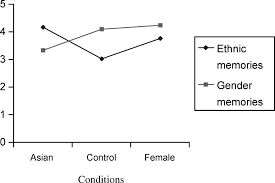Mind Games: The Wanderers, The Pink ODI and Something Else
Why is the Pink ODI special to Proteas performance? Why are some teams invincible at certain venues?
The Fakhar Zaman Show
Many cricket fans tuned in to watch the Pakistan innings hoping for a masterclass from the prolific Babar Azam, only for them to be treated to the Fakhar Zaman show.
It was Fakhar Zaman versus South Africa, and the Pakistan opener almost made me shelve this article with his magnificent innings of 193. His innings was so spectacular that I wanted him to get his 200, even though I also wanted Pakistan to lose. I am not often this conflicted, but that innings by Fakhar! He seeing a beach ball while the rest of the Pakistani batting line-up was seeing a ping pong ball-sized one.
Zaman scored almost 60% of Pakistan's total as the rest of the batting contributed a measly 105.
Watching him bat was not so different to watching an 80s/90s movie à la Sylvester Stallon. You know, one of those where the star steps over dead comrades as he marches on decimating enemy troops with a huge machine gun. (Yes, I grew up on Rambo and company.)
Spellbinding stuff.
Now to the article that Fakhar almost made me abandon.
Temba Carries On Tradition
?igshid=1x1c9jzrygccp
Temba Bavuma's first victory came with the Proteas wearing pink, a strip that they seem to be very successful in. Coming into the tie, the Proteas have had a great run in pink. Since the inception of the Pink Day ODIs, normally played earlier in the year, South Africa has won 7 Pink Day ODIs and lost 2. Sunday's victory makes it 8 wins from 10 matches.
80% success rate.
But, is it the pink kit or is it the venue, as all pink day ODIs are played at the Imperial Wanderers? From 1992 to the present, South Africa has won 27 and lost 9 ODIs at the venue.
Talk about dominance at a venue!! 75% success rate. The Proteas are virtually unbeatable at Wanderers. Fun fact: the Wanderers is also the venue of the iconic 438-game.
So, how does it happen that a venue, and a uniform, as a result of it being worn at that venue, can make a team invincible?
In other sports, the reason can be narrowed down to home advantage. However, in international cricket things get a little bit more different with matches being played at multiple venues, most of which might have the same conditions as others. Even when the conditions are similar, no two pitches are the same. Yet, somehow an international team will still that one venue that a team cannot lose at.
This happens largely because the mind is a very funny thing when it comes to sports. In sports, as far as the body is concerned, things are pretty straightforward. (I have chosen to use the word body to refer to the brain region that generates muscle memory or skill - otherwise, I would have to do a whole article on the two regions.)
So, where muscle memory is concerned, the equation is very simple: if you train harder and properly, you will get better. Thus, one will always make spot-on predictions about performance and outcomes based on ability and skill alone, if humans operated without the other part of the brain, the one that has all the conscious thoughts, feelings, emotions and such. The part that is affected by stereotypes and plays mind games. (It’s not only Quinton De Kock with a knack for playing those.)
Self-fulfilling prophecies
This is how the human mind is funny; negative stereotypes affect how individuals and teams/groups perform. This is called stereotype threat.
For instance, a study by researcher Jeff Stone and his colleagues analysed the impact of stereotype threat on Black and White golfers. Bearing in mind that popular language is filled with popular cliches like "Blacks have a more natural athletic ability" and "Whites possess athletic intelligence." It is not difficult to imagine what the participants thought when the phrases were brought up.
The researchers asked the African Americans and Caucasians to perform golf putting tasks that were framed as either a test of “sports intelligence” or a test of “natural athletic ability.”
Results of this study revealed that Black participants who were told that the putting task was a test of sports intelligence did worse than Blacks who were not given this information. In contrast, White participants who were told that the putting task was a test of natural athletic ability performed worse than Whites who did not receive this information.
"Merely framing a sports activity as diagnostic of a negative racial stereotype harms the performance of members of the negatively stereotyped group," the researchers noted.
But it is not all stereotypes that are bad. A 2014 study by Kelly Arnold found that positive stereotypes can enhance performance. This is called stereotype boost. While stereotype boost is not a counter to stereotype threat, it does affect the brain in almost the same way. The counter to stereotype threat is stereotype lift, but that is an article for another day.
Anyway, when told of a positive stereotype, human beings tend to live up to it, as it influences the way the individuals or team approaches and tackles the stressors they are facing.
Stereotype boost acts as a primer and enhances belief. For instance, in an intriguing study by Margaret Shih and her colleagues, Asian women were asked to perform a difficult math test when either their ethnicity (Asian) or gender (female) was primed. These two identities were selected because although Asian individuals are stereotypically viewed as being better at math than White individuals, women are stereotypically viewed as being worse at math as compared to men.
The researchers found that participants who were primed with their Asian identity performed better on the math test following the prime, but they performed worse when they were primed with their gender identity.
Like stereotype threat, stereotype boost is a self-fulfilling prophecy. Where stereotype threat creates anxiety in the mind of the athlete and thus affecting performance or execution, stereotype boost generates excitement and draws the athlete into “the zone.” And when teams or athletes are in “the zone” they are virtually unstoppable. They will have achieved what is called the flow state.
Now, it is highly likely that the story and legacy of the Pink Day ODIs, are positive primers for the Proteas that are likely to positively affect how they react to stress and competition. They are likely to experience a boost because of the internalized positive internalized story attached.
Belief
Belief is like motivation, transient and not always present. Coaches understand this, this is why they are consistently looking for ways to understand their players so they can motivate them better.
In the same vein, teams are not always confident, brave or resilient. In fact, bravery, resilience and confidence are not absolutes. They are not an either you have them or you do not have them-type of things. They consistently exist on a spectrum. We are all, to varying degrees, gutsy and fearful, confident and uncertain. And that degree is always in flux, never fixed.
Therefore, certain venues and certain uniforms go a long way in altering a team's resilience, confidence and belief in what they can achieve. They alter the way a team views themselves, and with that changed perspective comes higher levels of collective efficacy.
According to Albert Bandura, a renowned psychologist and author, "Collective efficacy is defined as the group’s shared belief that emerges from an aggregation of individual group members’ perception of the group’s capabilities to succeed at a given task."
This belief in the team's collective abilities feeds into the team's cohesion. Needless to highlight, cohesion is linked to improved performance because it facilitates effective interaction, healthy communication and efficient feedback loops.
In 2017, Katrien Fransen, Niels Mertens, Deborah Feltz and Filip Boen published a paper that reviewed the effects of confidence on teams and athletes. They titled it, "'Yes, we can!'− A review on team confidence in sports."
In the paper, they revealed that athletes who are more confident in their team’s abilities exert more effort, set more challenging goals, are more resilient when facing adversities, and ultimately perform better.
One More Thing...
Over 80% of people who read this article or one like it, to the end, are more likely to share it.
Do you think this content is worthy of your support?
If you think so, you can Buy Me A Coffee. Alternatively, you can buy several coffees if you like (simply change the number of coffees to your preferred amount). All coffees you buy will be greatly appreciated.
If not, worry not. I am consistently working to improve the quality of both the content and delivery. In the meantime, do you think it’s worthwhile for you to contribute to that growth and development by buying me a coffee?
Another way to support: please encourage anyone you think may be interested to subscribe to this newsletter, the blog or both.







